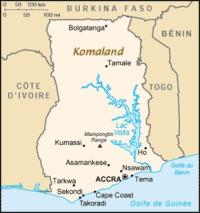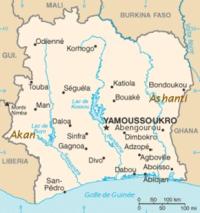Copy Link
Add to Bookmark
Report
dictyNews Volume 28 Number 14

dictyNews
Electronic Edition
Volume 28, number 14
May 25, 2007
Please submit abstracts of your papers as soon as they have been
accepted for publication by sending them to dicty@northwestern.edu
or by using the form at
http://dictybase.org/db/cgi-bin/dictyBase/abstract_submit.
Back issues of dictyNews, the Dicty Reference database and other
useful information is available at dictyBase - http://dictybase.org.
=========
Abstracts
=========
Note: The Xu et al. abstract from last week's dictyNews had an error
in the journal. The corrected version is below.
Locally controlled inhibitory mechanisms are involved in eukaryotic
GPCR-mediated chemosensing
Xuehua Xu1, Martin Meier-Schellersheim2, Jianshe Yan1 and Tian Jin1*
J. Cell Biology, in press
GPCR signaling mediates a balance of excitatory and inhibitory
activities that regulate Dictyostelium chemosensing to cAMP. The
molecular nature and kinetics of these inhibitors are unknown. We report
that transient cAMP stimulations induce PIP3 responses without a
refractory period, suggesting that GPCR-mediated inhibition accumulates
and decays slowly. Moreover, exposure to cAMP gradients leads to
asymmetric distribution of the inhibitory components. The gradients
induce a stable accumulation of the PIP3 reporter PHCrac-GFP in the
front of cells near the cAMP source. Rapid withdrawal of the gradient
led to the re-association of G-protein subunits, and the return of the
PIP3 phosphatase PTEN and PHCrac-GFP to their pre-stimulus distribution.
Reapplication of cAMP stimulation produces a clear PHCrac-GFP
translocation to the back but not to the front, indicating that a
stronger inhibition is maintained in the front of a polarized cell. Our
study demonstrates a novel spatiotemporal feature of currently unknown
inhibitory mechanisms acting locally on the PI3K activation pathway.
Submitted by: Tian Jin [TJIN@niaid.nih.gov]
--------------------------------------------------------------------------------
The Real Factor for Polypeptide Elongation in Dictyostelium Cells is
EF-2B, not EF-2A
Tomoko Yoshino, Yasuo Maeda and Aiko Amagai
Department of Developmental Biology and Neurosciences, Graduate School
of Life Sciences, Tohoku University, Aoba, Sendai 980-8578, Japan
BBRC, in press
Polypeptide elongation factor 2 (EF-2) plays an essential role in protein
synthesis and is believed to be indispensable for cell proliferation.
Recently, it has been demonstrated that there are two kinds of EF-2
(EF-2A and EF-2B with 76.6% of sequence identity at the amino acid level)
in Dictyostelium discoideum. Although the knockout of EF-2A slightly
impaired cytokinesis, EF-2A null cells exhibited almost normal protein
synthesis and cell growth, suggesting that there is another molecule
capable of compensating for EF-2 function. Since EF-2B is the most likely
candidate, we examined its function using ef-2b knockdown cells prepared
by the RNAi method. Our results strongly suggest that EF-2B is required
for protein synthesis and cell proliferation, functioning as the real EF-2.
Interestingly, the expressions of ef-2a and ef-2b mRNAs during development
are reversely regulated, and the ef-2b expression is greatly augmented in
ef-2a null cells.
Submitted by: Aiko Amagai [aiamagai@mail.tains.tohoku.ac.jp]
--------------------------------------------------------------------------------
PTEN Plays a Role in the Suppression of Lateral Pseudopod FormationÊ
During Dictyostelium Motility and Chemotaxis
Deborah Wessels, Daniel F. Lusche, Spencer Kuhl, Paul Heid andÊ
David R. Soll
Journal of Cell Science, in press
It has been suggested that the PIP3 phosphatase and tensin homolog, PTEN,
plays a fundamental role in Dictyostelium discoideum chemotaxis. To
identify that role, the behavior of a pten- mutant was quantitatively
analyzed using 2D and 3D computer-assisted methods. pten- cells were
capable of polarizing and translocating in the absence of attractant, and
sensing and responding to spatial gradients, temporal gradients and natural
waves of attractant. However, all of these responses were compromised
(i.e., less efficient) due to the fundamental incapacity of pten- cells to
suppress lateral pseudopod formation and turning. This defect was equally
manifested in the absence as well as presence of attractant. PTEN, which
is constitutively localized in the cortex of polarized cells, was found
essential for the attractant-stimulated increase in cortical myosin II and
F-actin that is responsible for the increased suppression of pseudopods
during chemotaxis. PTEN, therefore, plays a fundamental role in the
suppression of lateral pseudopod formation, a process essential for the
efficiency of locomotion and chemotaxis, but not in directional sensing.
Submitted by: Deb Wessels [deborah-wessels@uiowa.edu]
--------------------------------------------------------------------------------
A vesicle surface tyrosine kinase regulates phagosome maturation
Jun Fangà, Joseph A. Brzostowskià, Stephen Ou, Nilgun Isik, Vinod Nair,^
and Tian Jin*
Laboratory of Immunogenetics, National Institute of Allergy and Infectious
Diseases, NIH, Twinbrook II Facility, 12441 Parklawn Drive, Rockville,
Maryland 20852, USA
^ Research Technologies Section/RTB Rocky Mountain Laboratories/NIAID/NIH
903 South 4th Street, Hamilton, MT 59840
J. Cell Biology, in press
Phagocytosis is crucial for host defense against microbial pathogens and
for obtaining nutrients in Dictyostelium discoideum. Phagocytosed particles
are delivered via a complex route from phagosomes to lysosomes for
degradation, but the molecular mechanisms involved in the phagosome
maturation process are not well understood. Here, we identify a novel
vesicle associated receptor tyrosine kinase-like protein, VSK3, in
D. discoideum. We demonstrate how VSK3 is involved in phagosome maturation.
VSK3 resides on the membrane of late endosomes/lysosomes with its C-terminal
kinase domain facing the cytoplasm. Inactivation of VSK3 by gene disruption
reduces the rate of phagocytosis in cells, which is rescued by re-expression
of VSK3. We found that the in vivo function of VSK3 depends on the presence
of the kinase domain and vesicle localization. Furthermore, VSK3 is not
essential for engulfment, but instead, is required for the fusion of
phagosomes with late endosomes/lysosomes. Our findings suggest that localized
tyrosine kinase signaling on the surface of endosome/lysosomes represents a
control mechanism for phagosome maturation.
Submitted by: Tian Jin [TJIN@niaid.nih.gov]
==============================================================
[End dictyNews, volume 28, number 14]



















